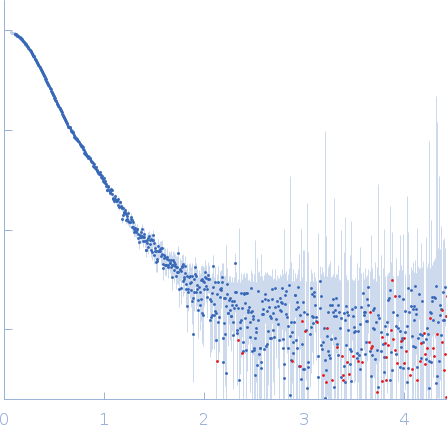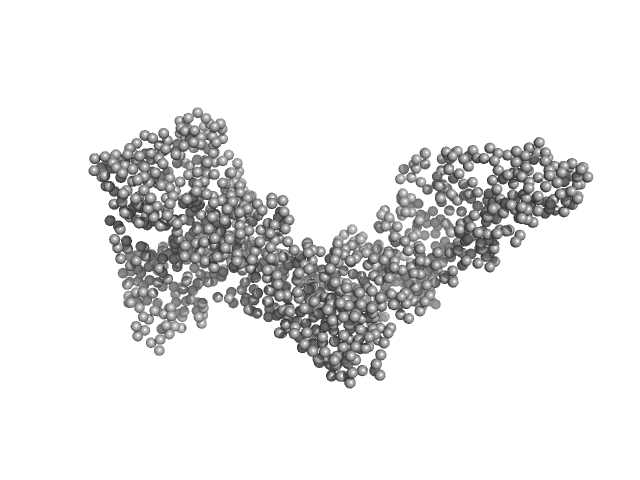|
Synchrotron SAXS
data from solutions of
Calcium-gelsolin and the G-form of actin at a 1:1 molar ratio in low ionic strength (SEC-SAXS)
in
2 mM Tris-Cl, pH 8.0, 0.2 mM ATP, 1 mM NaN3, 0.1 mM CaCl2, 0.5 mM DTT, pH 8
were collected
on the
EMBL P12 beam line
at the PETRA III storage ring
(DESY; Hamburg, Germany)
using a Pilatus 2M detector
at a sample-detector distance of 3.1 m and
at a wavelength of λ = 0.155 nm
(I(s) vs s, where s = 4πsinθ/λ, and 2θ is the scattering angle).
In-line size-exclusion chromatography (SEC) SAS was employed. The SEC parameters were as follows: A 500.00 μl sample
at 2 mg/ml was injected at a 0.50 ml/min flow rate
onto a GE Superdex 200 10/300 column
at 10°C.
20 successive
1 second frames were collected.
The data were normalized to the intensity of the transmitted beam and radially averaged; the scattering of the solvent-blank was subtracted.
CAUTION: The calculated p(r) is categorised as a SUSPICIOUS solution. Dmax over-estimated.
|
|
 s, nm-1
s, nm-1
